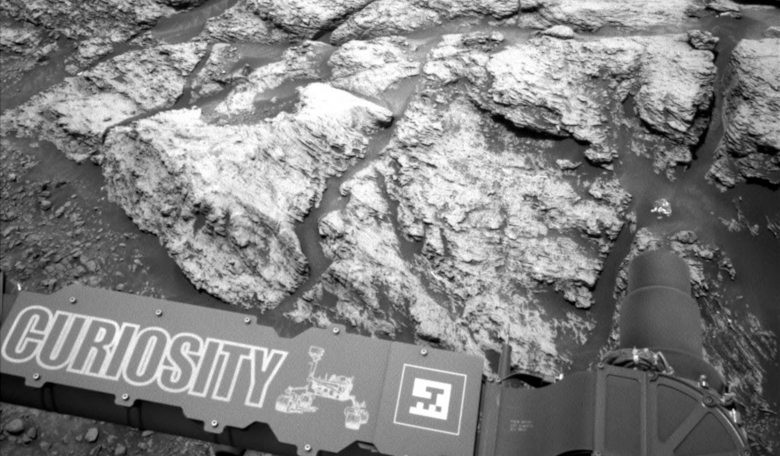The history of methane on Mars seems far from a simple one. Back in 2014, NASA's Mars rover Curiosity detected a tenfold spike in methane that at the time proved mysterious. Fast forward four years and NASA scientists reported that background levels of the gas seem to rise and fall seasonally on the Red Planet, but that every so often a sudden and apparently unrelated increase of this organic molecule also occurs. Now, Curiosity has detected another significant spike that so far, is the largest amount of methane ever measured during the mission.
When methane is found somewhere, its discovery always hits the headlines because this chemical compound is termed an organic molecule. Organic is often used in the same breath as the word life when talked about in planetary science circles, but organic to a scientist just means that a molecule contains at least one carbon atom. Methane fulfils that criteria because it packs together one carbon atom at its centre and four hydrogen atoms joined to it (CH4).
So while it might conjure up the tantalising prospect of activity from living organisms, even if they are as tiny as bacteria, methane can also be attributed to more mundane non-biological processes, such as the interaction between water and rock; a headline that doesn’t quite grab the same attention as the prospect of life being found.
Nonetheless, pinpointing the location of these hydro-carbon molecules might offer further clues as to their origin and help ascertain if they are biological or non-biological in nature.
When the first burst of methane was detected, the average background level of the gas in the atmosphere rose from around 0.7 parts per billion all the way up to 7 parts per billion. Scientists at the time surmised that the temporary increase in methane was an indication that there must be some relatively localised source, said Sushil Atreya of the University of Michigan, Ann Arbor, and Curiosity rover science team.
That would suggest then that something around the Gale crater area was responsible for the emission, as methane doesn’t hang around for long. Once released into the atmosphere, it can be quickly broken down by sunlight zapping the molecules so any surge in concentration means it must have been released recently.
However, this too is no indication of life as it simply might have been produced millions, even billions of years ago, laying dormant underground and then released through fissures via some geological process.
"With our current measurements, we have no way of telling if the methane source is biology or geology, or even ancient or modern," said SAM Principal Investigator Paul Mahaffy of NASA's Goddard Spaceflight Center in Greenbelt, Maryland.
More observations are planned by the team to add context to this recent measurement as so far details of this recent spike are limited solely to how much the methane surged by, which was around 21 parts per billion units by volume (ppbv) against the background level.
Sadly, Curiosity isn’t equipped with the necessary hardware to definitively say if the methane has sprung from its nearby location at Teal Ridge or anywhere else on the planet, just that it definitely happened.
The last spike in methane the rover recorded was questioned by some as being a by-product that Curiosity made itself, but independently confirmed results by scientists using data from Mars Express helped prove that the land-roving laboratory was not to blame. As before, collaborations with other scientists from different space organisations might help Curiosity again in helping to at least to locate the source of this possible transient plume.











